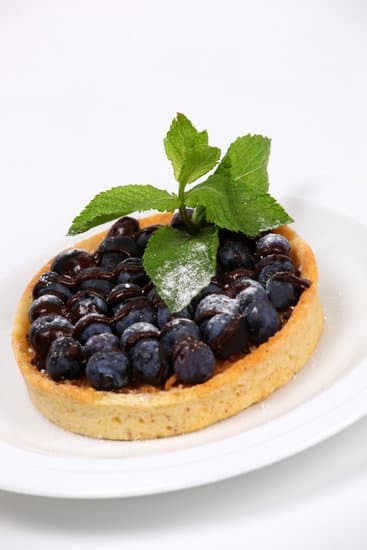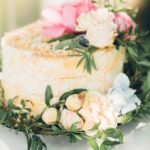Fresh edible flowers add a touch of beauty and versatility to cake decorating, transforming ordinary cakes into stunning works of art. These delicate blooms not only enhance the visual appeal of desserts, but they also offer a range of flavors that can elevate the taste experience.
In this article, we will explore the world of fresh edible flowers for cake decorating, including different types of blooms, where to source them, health and safety considerations, popular cake designs using these flowers, step-by-step guides on arranging them on cakes, flavor combinations to enhance taste, creative uses beyond cakes, and answers to frequently asked questions.
Get ready to take your cake decorating skills to new heights with the vibrant colors and delightful flavors that fresh edible flowers bring.
From dainty daisies to vibrant pansies, there is an abundance of fresh edible flowers available for creating exquisite cake designs. Whether you’re looking for a simple touch of elegance or a burst of color, these blooming beauties provide endless options for creative expression.
You’ll discover how versatile they are in adding texture, dimension, and life-like details to your cakes. So whether you’re preparing a birthday cake or planning an elaborate wedding dessert table, incorporating fresh edible flowers will undoubtedly leave your guests in awe.
Finding a reliable source for fresh edible flowers is vital when it comes to ensuring their quality and safety. We will guide you through the best suppliers known for their wide selection and commitment to freshness.
If you’re feeling adventurous and want to grow your own blooms, we’ll also provide tips on nurturing an edible flower garden right in your backyard. With our comprehensive information on sourcing these blossoms, you’ll have a steady supply at hand whenever inspiration strikes.
Join us as we embark on this exciting journey into the world of fresh edible flowers for cake decorating. Let us unlock the secrets behind breathtaking cake designs using these delicate petals while considering important health and safety considerations along the way. Prepare yourself for a feast of visually stunning desserts and unforgettable taste experiences that only fresh edible flowers can bring.
Types of Fresh Edible Flowers
Fresh edible flowers offer a wide range of options for cake decoration, adding a beautiful and unique touch to any baked creation. From vibrant petals to delicate buds, there are numerous types of fresh edible flowers available that can elevate the visual appeal of cakes. Here are some popular blooms that can be used for cake decoration:
- Roses: With their elegant appearance and sweet aroma, roses are a classic choice for decorating cakes. The petals of roses come in a variety of colors, including red, pink, yellow, and white, offering endless possibilities for creating stunning designs.
- Pansies: Pansies are known for their distinct markings and vibrant colors, making them an eye-catching addition to cakes. Their flat shape makes them perfect for placing on top of frosted cupcakes or arranging in cascades on larger cakes.
- Marigolds: Marigolds have bright orange or yellow petals that add a pop of color to any cake design. They have a slightly bitter taste which can complement the sweetness of the cake.
- Lavender: Known for its calming fragrance, lavender is not only visually appealing but also adds a subtle floral flavor to cakes. The purple buds or blossoms can be used as whole sprigs on top of larger cakes or dried and sprinkled as an accent.
- Nasturtiums: Nasturtiums offer bold and vibrant colors with large circular petals. They have a slightly peppery taste which adds an interesting contrast to sweet baked goods.
- Violets: Violets come in shades of purple and blue and have delicate petals that make them ideal for decorating smaller pastries like petit fours or macarons.
It is important to note that when using fresh edible flowers for cake decoration, make sure they are organically grown without the use of pesticides or other chemicals to ensure they are safe for consumption.
To properly handle fresh edible flowers before placing them on cakes, gently wash them in cold water to remove any dirt or debris. Allow them to air dry completely on a paper towel before using. Remove the stamens and pistils from larger flowers, as they can be bitter or have a gritty texture.
Where to Source Fresh Edible Flowers
When it comes to sourcing fresh edible flowers for cake decorating, there are several options available. Whether you prefer the convenience of purchasing from suppliers or want to cultivate your own blooms, there are various ways to ensure you have access to a variety of beautiful and safe flowers for your cakes.
Purchasing from Suppliers
One of the easiest ways to acquire fresh edible flowers is by purchasing them from reputable suppliers. Many specialty grocery stores and farmers’ markets carry a selection of edible flowers specifically designed for culinary use. These suppliers often ensure their products are grown without the use of pesticides or other harmful chemicals, making them safe for consumption.
For those who prefer the convenience of online shopping, there are also numerous websites that specialize in selling fresh edible flowers. These online suppliers offer a wide range of options, allowing you to explore unique and exotic blooms that may not be readily available in local stores. When purchasing from online suppliers, it’s important to read reviews and consider factors such as packaging and shipping methods to ensure the flowers arrive in good condition.
Growing Your Own
If you have a green thumb and are interested in cultivating your own fresh edible flowers, growing them at home can be a rewarding option. Many common flowers such as roses, violets, and pansies can be grown in home gardens or even in pots on balconies or windowsills. It’s essential to research which specific varieties are suitable for consumption and verify that they haven’t been treated with any harmful chemicals.
Before planting your own edible flower garden, consider factors such as sunlight requirements, soil conditions, and watering needs. Some flowers may require specific care instructions or thrive better in certain climates. With proper attention and care, growing your own fresh edible flowers can not only provide you with a constant supply but also add a personal touch to your cake decorations.
Overall, whether you choose to purchase from suppliers or grow your own, sourcing fresh edible flowers for cake decorating allows you to have a wide selection of beautiful blooms at your fingertips. Consider your preferences, availability, and level of commitment to determine the best method for obtaining these delightful additions to your cake creations.
Health and Safety Considerations
Fresh edible flowers add a beautiful and unique touch to cake decorating, but it is important to consider health and safety when using them. Here are some tips for selecting and preparing fresh edible flowers to ensure that they are safe to use on cakes.
Firstly, it is crucial to only use flowers that are safe for consumption. Not all flowers are edible, and some can be toxic or cause allergic reactions. Therefore, it is essential to accurately identify the flowers before using them as cake decorations. If you are unsure about a particular flower, do thorough research or consult with a knowledgeable florist or horticulturist.
When selecting fresh edible flowers, choose ones that are organically grown and free from pesticides or other chemicals. Ideally, grow your own organic flowers specifically for culinary purposes. This way, you have complete control over the growing process and can ensure that the flowers are safe for consumption.
Before using fresh edible flowers on cakes, it is crucial to clean them thoroughly. Gently rinse the blooms in cool water to remove any dirt or insects that may be present. Do not soak the flowers as this may affect their texture and color.
It is also recommended to remove the pistils and stamens of certain flowers before use. This is because these parts of the flower can have a bitter taste or produce pollen that could irritate sensitive individuals. Some examples of flower varieties where pistils and stamens should be removed include daylilies and pansies.
By following these health and safety tips when selecting and preparing fresh edible flowers, you can ensure that your cakes not only look stunning but also remain safe for consumption.
| Health and Safety Considerations | Tips for Selecting and Preparing Fresh Edible Flowers |
|---|---|
| 1. Only use flowers that are safe for consumption. | Accurately identify the flowers before using them as cake decorations. |
| 2. Choose organically grown flowers free from pesticides or chemicals. | Grow your own organic flowers specifically for culinary purposes. |
| 3. Clean the flowers thoroughly before use. | Gently rinse the blooms in cool water to remove dirt and insects. |
Popular Cake Designs using Fresh Edible Flowers
Fresh edible flowers offer a unique and beautiful touch to any cake design. They can transform a plain cake into a stunning work of art, adding color, texture, and fragrance. From elegant weddings to whimsical birthday parties, there are endless possibilities for incorporating fresh edible flowers into your cake designs. In this section, we will explore some popular cake designs that showcase the beauty of these blooms.
One popular cake design that features fresh edible flowers is the naked or semi-naked cake. This rustic and minimalist style has become increasingly popular in recent years. It involves leaving the layers of the cake exposed, with only a thin layer of frosting or buttercream between them. Fresh edible flowers add a natural and organic element to this design, creating a visually appealing contrast against the simplicity of the cake.
Another stunning cake design that incorporates fresh edible flowers is the cascading floral arrangement. This design is perfect for those looking for an extravagant and eye-catching centerpiece for their special occasion. The fresh flowers are arranged in a cascading manner, starting from the top of the cake and flowing down its sides. The combination of different colors and sizes of flowers creates a breathtaking visual effect.
For those who prefer a more subtle and delicate look, floral wreath cakes are an excellent choice. This design involves arranging small clusters or garlands of fresh edible flowers in the shape of a wreath on top of the cake. The wreath can be placed in the center or offset to one side, depending on your preference. This design is ideal for weddings or spring-themed events.
| Cake Design | Description |
|---|---|
| Naked or Semi-Naked Cake | A rustic and minimalistic design with exposed cake layers and a thin layer of frosting. Fresh edible flowers add a natural and organic element. |
| Cascading Floral Arrangement | An extravagant design where fresh edible flowers cascade down the sides of the cake, creating a visually stunning centerpiece. |
| Floral Wreath Cake | A delicate and subtle design featuring small clusters or garlands of fresh edible flowers arranged in the shape of a wreath on top of the cake. |
These are just a few examples of popular cake designs that can be created using fresh edible flowers. The possibilities are endless, and it’s up to your creativity to come up with unique and personalized designs. Whether you’re celebrating a special occasion or simply want to add an artistic touch to your cakes, incorporating fresh edible flowers is sure to impress your guests and elevate your cake decorating skills.
Step-by-Step Guide
Once you have sourced your fresh edible flowers and are ready to start decorating your cakes, it’s important to know how to properly arrange them for the most aesthetically pleasing result. Follow this step-by-step guide to learn the best techniques for arranging fresh edible flowers on cakes:
- Choose the right size and quantity: Consider the size of your cake and the overall design you want to achieve. Select flowers that are proportionate to the cake and ensure you have enough flowers to create a visually appealing arrangement.
- Prep your flowers: Before placing them on the cake, gently wash and pat dry each flower. Remove any stems, leaves, or thorns that may be present. Ensure you are only using edible parts of the flower.
- Plan your design: Lay out your flowers on a clean surface, arranging them in various positions until you find a design you’re happy with. Take into consideration factors such as color, shape, and size when planning your arrangement.
- Start with a base layer: Begin by placing a few larger flowers on the cake, creating a base layer for your arrangement. Position them strategically around the edges or in clusters depending on your desired look.
- Add smaller blooms: Once you have your base layer set up, fill in the gaps with smaller blooms or petals. These can be placed individually or grouped together to create depth and texture.
- Incorporate greenery: To add an extra element of beauty to your floral arrangement, consider incorporating some small sprigs of edible greenery such as mint leaves or rosemary sprigs.
- Secure the flowers: To ensure that your flowers stay in place throughout transportation and serving, gently press them into the frosting or use toothpicks if necessary. Be careful not to pierce deep into the cake, as this may affect its structure.
- Finishing touches: Once all of your flowers are arranged, step back and assess if anything needs to be adjusted. Ensure that no flower is overcrowding or overshadowing another. Make any necessary tweaks before displaying your masterpiece.
Remember, when arranging fresh edible flowers on cakes, creativity is key. Experiment with different color combinations, textures, and sizes to achieve a unique and visually stunning design. With practice, you’ll become more confident in your arrangement skills and be able to create beautiful floral creations on any cake you decorate.
Flavor Combinations
Exploring Floral Flavors
Fresh edible flowers not only add visual appeal to cakes, but they can also enhance the taste with their unique and delicate flavors. Each type of edible flower offers a distinct taste profile that can complement different flavor combinations. When experimenting with floral flavors, it is important to consider the intensity of the flowers’ taste and how it pairs with other ingredients in the cake.
Combining Floral and Citrus Notes
Citrus fruits, such as lemon, lime, and orange, pair particularly well with fresh edible flowers. The refreshing tanginess of citrus enhances the floral flavors and creates a vibrant taste sensation. For example, lavender pairs beautifully with lemon, offering a lovely marriage of sweet and citrusy notes. Similarly, hibiscus flowers bring a tartness that complements the zesty flavors of oranges or limes.
Balancing Sweetness with Floral Aromas
If you are looking to balance out sweetness in your cake, fresh edible flowers can help achieve that by adding subtle aromas. For instance, blending rose petals into vanilla or berry-flavored cakes can create an exquisite combination of sweetness and delicate floral notes. Additionally, violets lend a slightly perfumed quality that beautifully counteracts the richness of chocolate or caramel flavors.
Playing with Herbs and Flowers
Fresh herbs offer a savory element that can be fascinating when combined with floral flavors in cakes. Some popular herb-flower combinations include pairing mint leaves with elderflowers for a refreshing twist or adding thyme alongside chamomile petals for an earthy yet floral flavor profile. These herb and flower combinations add complexity to your cake’s taste while highlighting the beauty of both ingredients.
Incorporating fresh edible flowers into your cakes opens up a world of exciting possibilities for enhancing taste profiles. By understanding how different flavors interact and experimenting with combinations, you can create cakes that not only look stunning but also offer an unforgettable culinary experience. So don’t be afraid to explore floral flavors and let your creativity blossom in the kitchen.
Creative Uses beyond Cakes
Fresh edible flowers are not just limited to cake decorating-they can be used in a variety of unconventional ways to add a unique touch to your culinary creations. Here are some creative uses for fresh edible flowers that go beyond cakes:
- Salads and Appetizers: Fresh edible flowers can be a stunning addition to salads and appetizers, adding both visual appeal and a delicate flavor. You can sprinkle them on top of green salads or use them as garnishes for cold pasta salads, bruschetta, or crostini.
- Cocktails and Beverages: Impress your guests by incorporating fresh edible flowers into your cocktails and beverages. Edible flowers such as pansies, violets, and lavender can add a pop of color and aroma to cocktails like floral-infused gin and tonics or summery sangrias. You can also freeze individual flower petals in ice cubes for an elegant touch.
- Infused Oils, Vinegars, and Syrups: Take your homemade salad dressings, marinades, or baking recipes to the next level by infusing them with fresh edible flowers. Edible flowers like rose petals or chamomile can enhance the flavor of oils, vinegars, and syrups. These infused ingredients can then be used in various recipes to give them a subtle floral twist.
- Floral Butters and Creams: Transform ordinary butter or cream into something extraordinary by infusing it with fresh edible flowers. You can create floral butters by mixing softened butter with finely chopped flower petals and herbs like thyme or lemon zest. These butters can be spread onto breads or used as toppings for grilled meats or roasted vegetables.
- Desserts: Fresh edible flowers can be an eye-catching decoration for various desserts beyond cakes. Use them to decorate pastries like tarts or pies, sprinkle them on top of puddings or custards, incorporate them into homemade chocolates or truffles, or infuse them into creams and mousses for a delectable floral flavor.
These are just a few unconventional ways to incorporate fresh edible flowers into your culinary creations. The possibilities are endless, limited only by your imagination. Remember to always do your research on which flowers are safe to consume and make sure they are properly washed and prepared before use. With fresh edible flowers, you can elevate any dish into a work of art that delights both the eyes and the taste buds.
Frequently Asked Questions
When it comes to using fresh edible flowers for cake decorating, there may be some common questions that arise. Here, we aim to provide answers to these inquiries and address any concerns you may have.
- Are all flowers safe to eat?
- How should I prepare fresh edible flowers before using them on a cake?
- Can I store fresh edible flowers?
- How long do fresh edible flowers last on a cake?
Not all flowers are safe for consumption, so it is important to know which ones are edible. While there is a wide variety of blooms that can be used on cakes, it is crucial to only use flowers that are specifically labeled as edible. These flowers are typically grown without the use of pesticides or chemicals and are safe for human consumption.
Before using fresh edible flowers on cakes, it is essential to properly clean and prepare them. Start by gently rinsing the flowers under cool water to remove any dirt or debris. Next, carefully remove the petals from any stems or greenery. Be sure to remove any stamens or pistils from larger flowers like roses or hibiscus as they can add a bitter taste. Once cleaned and prepared, the flowers are ready to be arranged on your cake.
Fresh edible flowers are best used immediately after picking or purchasing them. However, if you need to store them for a short period of time, place them in a container lined with damp paper towels and refrigerate them in order to preserve their freshness.
The lifespan of fresh edible flowers on a cake will vary depending on factors such as temperature and humidity. Generally, they can last anywhere from a few hours up to several days if stored correctly in the refrigerator.
By addressing these frequently asked questions, we hope to provide clarity and guidance when it comes to using fresh edible flowers for cake decorating. With this information in mind, you can confidently explore the beauty and versatility of these blooms to create stunning and delicious cake designs.
Conclusion
In conclusion, fresh edible flowers are a fantastic way to elevate your cake decorating skills and create stunning and unique creations. The beauty and versatility of these blooms make them the perfect choice for adding a touch of elegance and whimsy to any cake design.
Exploring the different types of fresh edible flowers opens up a world of possibilities for cake decoration. From delicate roses to vibrant marigolds, there are so many blooms to choose from that can complement any theme or style you have in mind. The variety allows for endless creativity and ensures that each cake you decorate will be truly one-of-a-kind.
Sourcing fresh edible flowers is made easy with the availability of trusted suppliers or by growing your own garden. It is important to consider health and safety when selecting and preparing these flowers. Always opt for organic sources and make sure they have not been treated with pesticides or other harmful chemicals. Properly cleaning and storing the flowers is crucial in ensuring their freshness and safety.
Fresh edible flowers can also enhance the taste of your cakes by introducing subtle floral flavors. Experimenting with flavor combinations will add an extra layer of complexity to your creations, making them even more memorable.
Beyond cakes, fresh edible flowers can be incorporated in various unconventional ways, such as in drinks, salads, or as garnishes for other desserts. The possibilities are truly endless when it comes to exploring creative uses for these beautiful blooms.
Overall, incorporating fresh edible flowers into your cake decorating repertoire will take your skills to new heights. Their natural beauty, unique flavors, and versatility make them an invaluable addition to any baker’s toolkit. So don’t be afraid to experiment – let your imagination run wild and create stunning masterpieces that will leave a lasting impression on all who see and taste them.
Frequently Asked Questions
What are the best edible flowers for cakes?
When it comes to choosing the best edible flowers for cakes, there are several options that can add a beautiful touch to your desserts. One popular choice is the rose, which not only looks stunning but also lends a subtle floral flavor to the cake. Another fantastic option is lavender, known for its aromatic scent and delicate taste that pairs well with both sweet and savory dishes.
Other edible flowers that work well for cake decoration include pansies, violets, marigolds, and hibiscus. These flowers can be used whole or petals can be scattered on top of the cake for an elegant finishing touch.
Which flowers are edible for cake decorating?
Many different flowers are edible and suitable for cake decorating purposes. One popular choice is the violet flower, which comes in various vibrant colors such as purple, blue, or white. Violets have a pleasant fragrance and a subtle sweet flavor that complements cakes nicely.
Calendula flowers are also commonly used as they have a mild peppery taste and vibrant orange or yellow petals that add a pop of color to any dessert. Nasturtiums are another favorite among bakers due to their bold hues of red, orange, or yellow and their slightly spicy flavor reminiscent of watercress.
Can I use fresh flowers to decorate a cake?
Yes, fresh flowers can be used to decorate a cake; however, it’s important to exercise caution when doing so. First and foremost, make sure the flowers you plan to use are culinary-grade and safe for consumption. Not all flowers are suitable for eating, as some may have been grown with pesticides or other chemicals that could be harmful if ingested.
Additionally, it’s crucial to ensure that the selected flowers have not been treated with any toxic substances such as certain fertilizers or floral sprays intended solely for decorative purposes. To use fresh flowers on a cake safely, consider using a barrier between the blooms and the cake itself by inserting them into food-safe flower picks or wrapping their stems in parchment paper or floral tape. This way, you can enjoy the aesthetic appeal of fresh flowers while also ensuring the cake remains safe and hygienic to eat.

Welcome to our cake decorating blog! My name is Destiny Flores, and I am the proud owner of a cake decorating business named Cake Karma. Our mission is to provide delicious, beautiful cakes for all occasions. We specialize in creating custom cakes that are tailored specifically to each customer’s individual needs and tastes.





